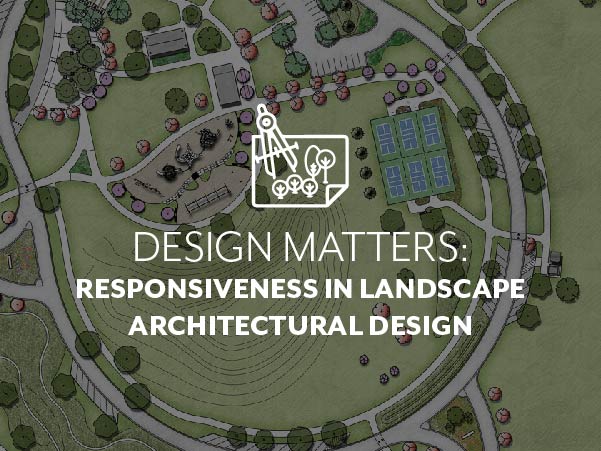
Design Matters: Responsiveness in Landscape Architectural Design
As landscape architects approach a project, their goal is to design a space that is not just natural, functional, and practical, but one that is sustainable and has a meaningful sense of place. To accomplish this goal, landscape architects must consider of a variety of factors under the umbrella of “responsive design.”
Responsiveness in landscape architectural design addresses the changing needs and conditions of the environment. According to Bryan Wilson, landscape designer at FOCUS Engineering & Surveying, this can include factors such as weather, climate, topography, hydrology, and the selection of native or adaptable plants that thrive in the environment.
“Plants that are suited to the local climate and soil conditions require less water and maintenance,” says Bryan. “Adaptive and native plants can reduce the environmental impact of the project and create an aesthetic that is unique to the location.”
In addition to environmental factors, the user experience must also be considered in a responsive design. A landscape architect must consider and understand the needs and preferences of the people who will be using the space and design the landscape to meet those needs. For example, if a space is intended for outdoor recreation, the design should include features such as seating, shade, and accessible pathways. If a space is intended for more contemplative activities, the design should include features such as peaceful water features and secluded areas for solitude.
“Most spaces we design are intended for visitors of all ages and abilities. It requires creativity in our approach to the design, ensuring that the site is inviting and responds to the health, safety and welfare of all people,” Bryan explains.
“At FOCUS, we embrace the responsiveness in design,” he continues. “By combining social considerations, the user experience, and environmental factors, our team of landscape architects and designers is creating spaces that are not only beautiful, but functional and meaningful for all who use them.”
